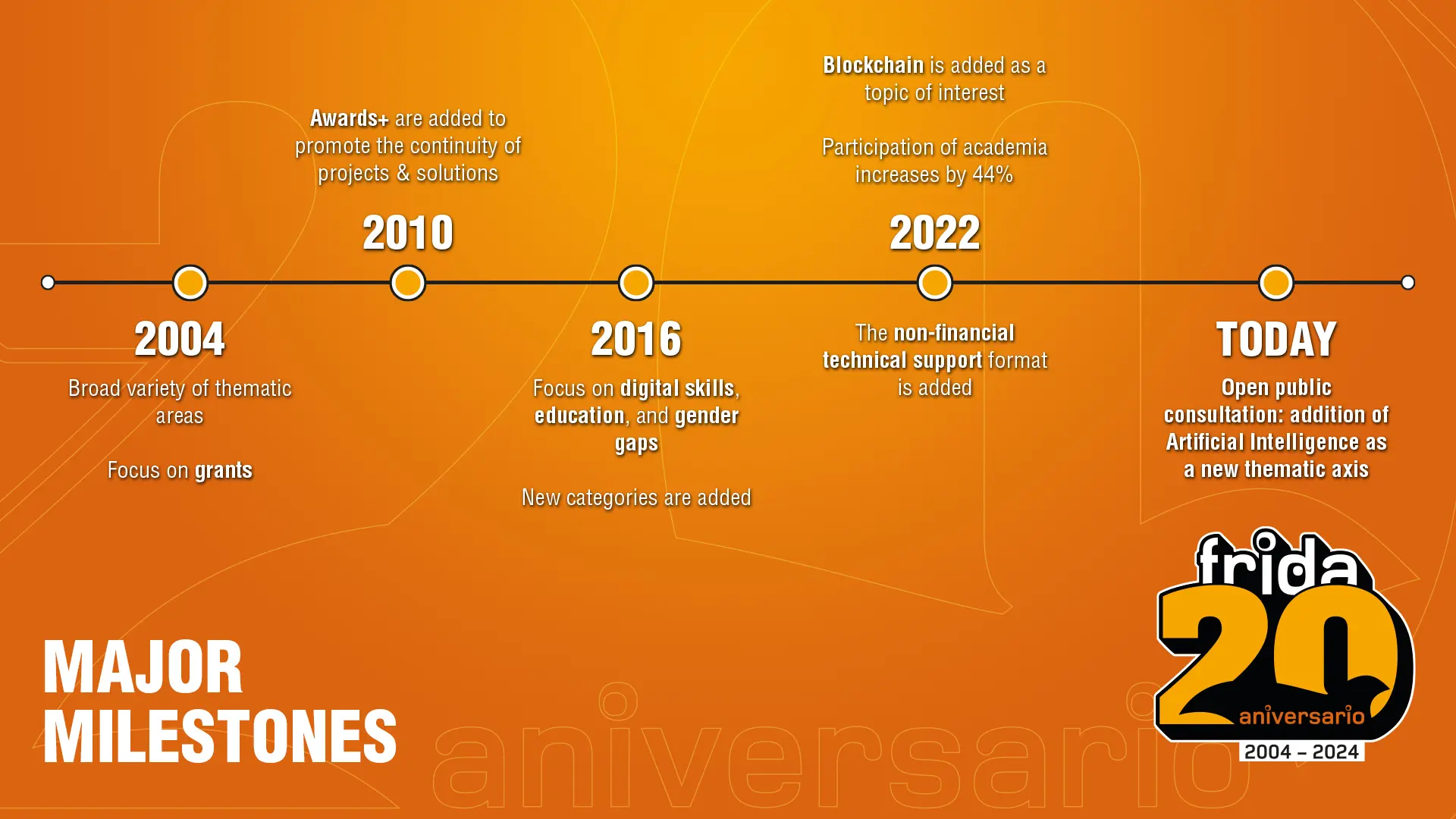A Historical Journey Through the 20 Years of the FRIDA Program
29/05/2024

A Historical Journey Through the 20 Years of the FRIDA Program
By Arturo Servin, Technical Manager of Programs and Strategic Interconnection and Global Network Infrastructure at Google.
During LACNIC 41, I had the honor of presenting the incredible journey of the FRIDA Program and its 20 years as a regional fund for digital innovation in Latin America and the Caribbean. During this time, the program has consistently supported institutions that promote projects and solutions in line with this objective.
FRIDA is a key program in the life of LACNIC. Almost three million dollars have been invested over the past 20 years, initially with the support of the International Development Research Center (IDRC) of Canada, the Internet Society, the Seed Alliance, and the Swedish Cooperation Agency (SIDA), and managed by LACNIC. The result? A total of 186 projects supported in various categories such as grants, awards, and scale-ups.
A tour of the program’s history includes a series of Internet milestones. The fund was created in 2004. Back then, the Internet had approximately 800 million users and LACNIC had only nine employees.
In 2006, the Internet Society joined the program as a funding organization. At that time, there were already 1.7 billion Internet users and only 55 million available IPv4 addresses. In this context, iPhone and Android smartphones were launched, networks transitioned from 2G to 3G, and mobile data began to play a key role, all of which increased the demand for IP addresses. The Internet continued to grow and so did the number of programs and projects funded by FRIDA.
During that period, the program focused on small grants to support IPv6 deployment and implementation in the region, while projects focused on topics such as communications security and DNS. Additionally, the program began supporting projects for the deployment of community networks and its focus shifted to topics such as education, robotics, and teaching skills to enable the use of the Internet.
(Free access, no subscription required)
In 2010, FRIDA added the awards format, while in 2011 World IPv6 Day was incorporated (it’s worth noting that IPv6 adoption represented less than 1% of users). During this stage, LACNIC celebrated its 10th anniversary, the first RPKI RFC was published, and World IPv6 Launch Day was introduced.
The projects sponsored during this period focused primarily on infrastructure and access, cybersecurity, and the creation of CSIRTs.
In 2014, FRIDA incorporated the scale-ups and awards formats, as the Internet began to mature and we witnessed, for instance, how LACNIC entered the IPv4 exhaustion phase. In parallel, there was an expansion of projects relating to civil society, public administration and e-government, health, and education. In other words, projects were no longer limited to technology, but instead other types of projects started to be included.
The views expressed by the authors of this blog are their own and do not necessarily reflect the views of LACNIC.